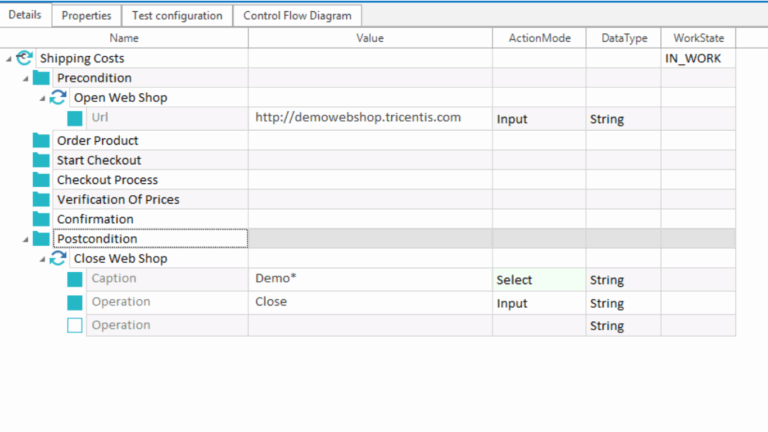Introduction to TOSCA TCP
TOSCA Test Configuration Parameters (TOSCA TCP) enable automation testers to create dynamic, reusable, and configurable test cases. By defining key parameters like browser type or environment at various test levels, testers can control execution behavior without modifying the test logic itself. This flexibility is especially useful in large-scale test environments where maintaining modular and scalable tests is crucial.
This detailed guide explores how to implement and optimize TOSCA TCP for modules such as OpenURL, CloseBrowser, and TBOX Window Operation. We also include a real-world use case, practical configuration tips, and hands-on applications to help learners build mastery. This guide is suitable for learners exploring TOSCA Training Online or those preparing for TOSCA Automation Course Online.
Understanding TOSCA TCP Parameters
TOSCA TCP allows users to define test-level or folder-level parameters to control browser selection, data input, and environment targeting. These parameters can be reused across test cases to streamline automation, reduce redundancy, and increase test reliability.
When multiple TOSCA TCP values exist, the value defined at the test case level takes precedence over the one set at the folder level.
Real-World Test Case Example
Let’s consider the following automation scenario:
Scenario
- Browser: Chrome
- URL: https://sampleapp.tricentis.com/101/index.php
- Actions:
- Launch the home page
- Click on “Automobile”
- Fill in vehicle information
- Close the browser
To execute this, the browser type is defined using TOSCA TCP to allow dynamic control.
Step-by-Step Implementation
- Add TOSCA TCP at Folder Level
- Parameter:
Browser - Value:
Chrome
- Parameter:
- Override at Test Case Level
- Parameter:
Browser - Value:
Edge
- Parameter:
- Observation: The test case will use Edge as it overrides the folder-level configuration.
OpenURL Module Explained
The OpenURL module is used to launch a website in a web browser. It contains two key attributes:
- Url: Specifies the address to navigate to.
- UseActiveTab: If set to true, it opens the URL in an existing tab. If false or empty, it opens in a new tab or window.
When using Chrome and no window is active, the browser opens in incognito mode with default arguments. If a window is already open, it reuses the existing session.
Example Usage
Url: {CP[Environment]}
UseActiveTab: TrueThis setup utilizes a configuration parameter to dynamically determine the environment.
CloseBrowser Module Explained
The CloseBrowser module terminates browser sessions. The key attribute is:
- Title: Identifies the window/tab to close. You can use exact titles or wildcards.
Behavior
- Leaving the Title field empty closes the current browser window.
- Using the wildcard * closes all open browser windows.
Example Usage
Title: *
Browser: {CP[Browser]}This command closes all instances of the specified browser.
TBOX Window Operation Module
The TBOX Window Operation module goes beyond browsers. It can interact with and close any desktop or application window, such as system utilities or tools.
Usage
- Set the operation to Close
- Define the window title or use * for all matching windows
Use Cases
- Close desktop applications
- Terminate calculators or file explorers
- Use in hybrid test cases combining web and desktop automation
Custom Configuration Parameters
Beyond browser and environment configurations, testers can define custom values like num1, num2, etc. These parameters can be used dynamically across test steps.
Defining Custom TCPs
- Add a configuration parameter at the test case level.
- Name it num1 and set the value as 10.
- Refer to it in test steps as {CP[num1]}.
This approach supports data-driven testing and enhances modularity.
Test Case Overview with TOSCA TCP
| Step | Module | Value |
| 1 | OpenURL | {CP[Environment]} |
| 2 | Click Automobile | Automobile |
| 3 | Enter Vehicle Info | From test sheet or CP |
| 4 | CloseBrowser | * and {CP[Browser]} |
Advanced Use Cases for TOSCA TCP
1. Multi-Browser Testing
With TOSCA TCP, you can automate tests across Chrome, Edge, and Firefox by dynamically passing the browser name.
2. Environment Switching
Define parameters like:
QA: https://qa.sampleapp.com
UAT: https://uat.sampleapp.comThen use {CP[Environment]} to toggle.
3. Feature Toggles
For apps with feature flags, you can define:
FeatureX = trueUse it within conditional steps to branch logic.
Practical Benefits
Using TOSCA TCP provides numerous benefits:
- Flexibility: Define once, reuse often
- Maintainability: Centralize change management
- Scalability: Expand test coverage with minimal updates
- Readability: Clear structure and input values
These qualities are especially important for professionals pursuing TOSCA Training Online and aiming for scalable enterprise-level automation.
Troubleshooting Tips
- Use log messages to confirm which TCP is active
- Always check if the TCP is defined at the expected level
- Ensure browser drivers/extensions are correctly installed
Best Practices for TOSCA TCP
- Naming: Use intuitive names like
Browser,Env,BaseURL - Placement: Define parameters at the folder level by default
- Override: Use test case level to override when needed
- Validation: Test parameters independently before scaling
Sample Test Execution Walkthrough
- Launch the URL using OpenURL with {CP[Browser]}.
- Perform interactions such as clicking “Automobile” and filling in forms.
- Close all browser sessions using CloseBrowser with title *.
- Optionally close open desktop applications using TBOX Window Operation.
This end-to-end approach showcases how effectively TOSCA TCP can be integrated with browser and non-browser modules.
Relevance to Learners and Test Engineers
Anyone preparing for certification or currently enrolled in TOSCA Automation Course Online must grasp the depth and flexibility TOSCA TCP offers. The principles explained here also apply to cost-conscious learners evaluating the TOSCA Certification Cost as they consider formal training.
Whether you’re building foundational knowledge or optimizing an enterprise test suite, mastering TOSCA TCP is an essential skill.
Conclusion
TOSCA TCP is a foundational feature for dynamic and scalable automation in TOSCA. When used with OpenURL, CloseBrowser, and TBOX Window Operation modules, it transforms how test cases are structured and maintained.
Testers aiming to enroll in TOSCA Training Online or evaluating the TOSCA Certification Cost will find this knowledge particularly beneficial.
Maximize test efficiency by using TOSCA TCP across your automation scenarios. Start applying it today and streamline your testing lifecycle.


























